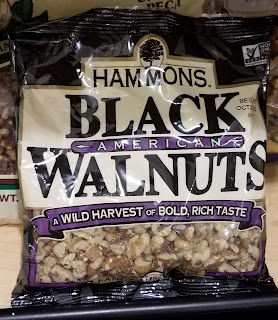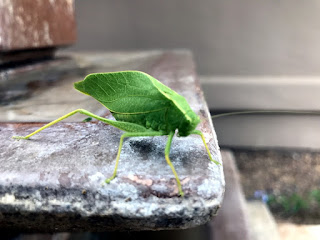Traditions. New Year’s Day seems to be filled with them. When asked why people repeat family traditions on the eve or day of a new year, most of my friends tell me it’s because “that’s what my family did.”
But why? Is it because we feel all warm and fuzzy about memories of our childhood and simpler times? Is it because we feel closer to those we love merely because we repeat a tradition? Or do we believe there is some hidden truth in those traditions that compels us to repeat them “just in case” they are relevant to the success or failure of the coming year?
I’ll look at my traditions and see if I can figure it out.
Sunday night, I plan to stay up until the ball drops in Times Square. It's a tradition. I even attended those "dropping of the ball zoos" when I lived in New York City. I stood in the massive crowd of loud, drugged, drunk, revelers in freezing weather (sometimes in snow) just to watch a giant apple drop in Times Square. Yes, I lived there before the gorgeous high-tech Waterford crystal ball made its first appearance. As an introvert, the crowd was not an easy challenge for me. The pick-pockets and gropers didn’t make it any easier. But, it was a tradition. I admit I can't remember any time when staying up to watch the ball drop added anything to my new year--except that I woke up later the next morning.
Apparently, it is not an important tradition for everyone. Several of my friends admit they go to bed long before the excitement of a ball dropping and people screaming begins. Since I live alone, I sit by myself at midnight, cheering in the new year alone while thousands of New Yorkers scream and kiss beneath the Waterford ball, freezing their tails off. At least I'm warm as I toast my glass of non-alcoholic grape juice.
But there are more traditions than fighting to stay awake long enough to see a ball (or apple) drop at midnight.
 |
| Black-eyed peas for New Year's Day |
The food. My mother told me from childhood that we must eat black-eyed peas on New Year’s Day. When I complained that I hated them, she pointed out that the more you eat, the more money you’ll have during the year. Then she told me it was up to me to eat as many as possible so that the family wouldn’t end up in the Poor House. How’s that for incentive? It was good enough to guilt me into forcing beans down my throat until I thought I might puke them up.
Being from the mountains of southeastern Kentucky, at least we didn’t have to eat sauerkraut (yuck!) or collard greens swimming in vinegar (double yuck!) like some of my Southern friends. I guess I should feel fortunate I only had to eat black-eyed peas. Of course, my favorite part of it was the fatback used for seasoning.
These days, I still find myself cooking black-eyed peas every New Year's Day. Instead of fatback, though, I use the ham bone from Christmas dinner. I have developed a taste for the peas now. It helped when I turned from the dried peas to fresh ones. So, I spend the day cooking them.
These days, I still find myself cooking black-eyed peas every New Year's Day. Instead of fatback, though, I use the ham bone from Christmas dinner. I have developed a taste for the peas now. It helped when I turned from the dried peas to fresh ones. So, I spend the day cooking them.
These days, though, I tend to add a couple of potential traditions (it's never too late to start a new one, is it?) to my New Year's Day meal.
 |
| Fried frog legs--a new tradition? |
One year, I thought it would be good to JUMP INTO THE NEW YEAR with frog legs. Dad used to go frog gigging often when I was a child. I loved watching my mom fry them in the old black skillet as they jumped around in the skillet. You know they taste like chicken, don't you? Well, I think it's a good tradition to encourage us to jump into the new year full of excitement, expectation, and hope.
 |
| Fried green tomatoes |
So, why do I celebrate traditions? Perhaps there is something inside me that believes we must continue traditions as our way of not giving up on the promises of our youth. Perhaps it is because the traditions connect me with family members who have already passed. Maybe it’s because traditions are what make me feel connected with my family--past and present. Or, perhaps, traditions are what give us hope that the unknown future of the coming year doesn’t matter as much as the unity, support, and love of our families. Just maybe, traditions solidify hope.
Whatever the reason, it gives me an excuse to make a big deal out of tradition and eat food I don't usually eat. That makes it special.
Some of you may think you must repeat traditions because your dead relatives will haunt you for the whole year if you don't. I rather doubt that one, but it needed to be said. And some of you may believe you will have bad luck if you don't eat certain foods on a certain day. You are the same people who cringe when you step on a crack (break your mother's back), break a mirror, or panic when a black cat walks across your path. Enough said about that ...
No matter why we honor tradition, there's no harm in it. And it might, just might, draw us closer together with our family, even if only for one day of the year. One thing you can be sure about--tradition will outlive those resolutions you make.
Some of you may think you must repeat traditions because your dead relatives will haunt you for the whole year if you don't. I rather doubt that one, but it needed to be said. And some of you may believe you will have bad luck if you don't eat certain foods on a certain day. You are the same people who cringe when you step on a crack (break your mother's back), break a mirror, or panic when a black cat walks across your path. Enough said about that ...
No matter why we honor tradition, there's no harm in it. And it might, just might, draw us closer together with our family, even if only for one day of the year. One thing you can be sure about--tradition will outlive those resolutions you make.
Happy New Year to you and your family. May you enjoy your traditions, old and new, as you celebrate the hope and promises the new year offers.
What traditions did you grow up following? Do you know why? Do you have any new ones you've added to your own family's menu? I'd love to hear your stories.














































